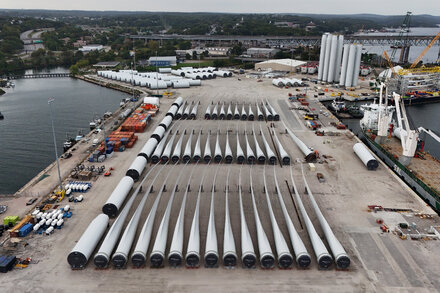Typhoon Matmo slammed into China’s southern coast early Sunday, bringing powerful winds and torrential rains to Guangdong Province. The severe tropical storm triggered immediate emergency responses, including the evacuation of tens of thousands of residents.

Typhoon Matmo Makes Landfall in Southern China, Triggering Warnings and Evacuations
Typhoon Matmo made landfall on China’s southern coast early Sunday morning, bringing powerful winds and torrential rains to Guangdong Province. The storm, categorized as a severe tropical storm upon impact, is the latest to hit the region this typhoon season, prompting widespread emergency responses and the evacuation of tens of thousands of residents.
Matmo’s eye crossed the coast near Maoming, Guangdong, at approximately 3:00 AM local time. Chinese meteorological authorities reported sustained winds of up to 110 kilometers per hour (about 68 miles per hour) at its center, with gusts significantly higher. The typhoon’s arrival followed days of intense preparation across the coastal provinces, with officials bracing for significant disruption.
Immediate Impact and Preparations
The immediate aftermath of Matmo’s landfall saw widespread power outages affecting several coastal cities in Guangdong. Heavy rainfall, with some areas reporting over 200 millimeters (nearly 8 inches) within a few hours, raised concerns about flash flooding and potential landslides in mountainous regions. Ferry services, flights, and high-speed rail operations in affected areas were suspended ahead of the storm’s arrival, stranding thousands of travelers but also ensuring public safety.
“Typhoon Matmo’s landfall brought formidable conditions, particularly heavy rainfall and strong gusts that pose a significant risk of urban flooding and geological hazards,” stated a spokesperson for the Guangdong Provincial Meteorological Bureau. “Our monitoring systems indicate that the storm’s slow movement after landfall could prolong the period of intense precipitation.”
Prior to Matmo’s arrival, local governments initiated extensive evacuation efforts. More than 80,000 residents from vulnerable coastal areas, low-lying communities, and fishing villages in Guangdong and neighboring Hainan province were moved to designated shelters. Fishing boats were recalled to port, and offshore oil platforms were secured or evacuated.
Government Response and Outlook
China’s Ministry of Emergency Management activated a Level III emergency response for flood and typhoon prevention, dispatching relief teams and supplies to the affected provinces. Search and rescue operations were on standby, and essential services worked to restore power and clear debris from major roads.
As Matmo moves further inland, it is expected to weaken rapidly into a tropical depression. However, meteorological forecasts warn that heavy rains will likely persist over southern and southwestern China for the next 24 to 48 hours, extending the risk of flooding to interior provinces. Authorities have urged residents to remain vigilant and follow official advisories.
“The safety of our citizens remains our utmost priority,” a local disaster relief official in Maoming commented. “While the immediate impact of the winds subsides, the threat from prolonged heavy rainfall and potential flooding will continue to demand our full attention and resources in the coming days.”
Emergency crews are currently assessing the full extent of the damage, with reports of downed trees, damaged infrastructure, and agricultural losses beginning to emerge. The focus now shifts to recovery efforts and mitigating the secondary impacts of the extensive rainfall.
Source: Read the original article here.





